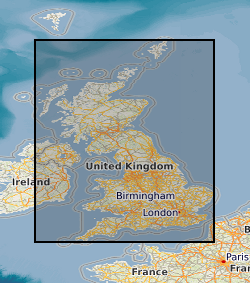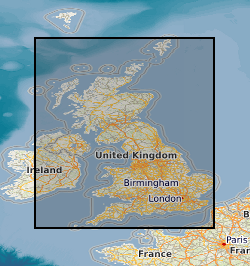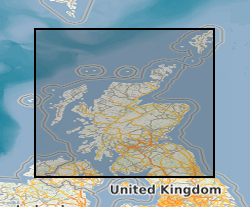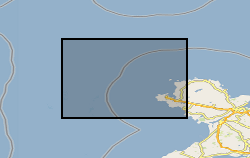ESRI Shapefiles
Type of resources
Topics
Keywords
Contact for the resource
Provided by
Years
Formats
Representation types
Update frequencies
Scale
-

BGS GeoSure identifies, at 1:50 000 scale, areas of susceptibility and considers the following specific hazard processes that can occur in Great Britain: 1. Shrink–Swell: Swelling clays change in volume due to changes in water content; this can lead to movements (up or down) in the upper two metres of the ground, which may affect property foundations. 2. Landslides (Slope Instability): Slope instability occurs when particular slope characteristics combine to make the slope unstable. Downslope movement of materials (landslide) may cause damage to foundations, services or impact damage to buildings. 3. Soluble Rocks (Dissolution): Ground dissolution occurs when certain types of rocks, containing layers of soluble material, get wet and the soluble material dissolves. This can cause underground cavities to develop. These cavities reduce support to the ground above and can lead to a collapse of overlying rocks. 4. Compressible Ground: Some types of ground may contain layers of very weak materials such as peat or some types of poorly structured clays. These may compress if loaded by overlying structures, or if the groundwater level changes. This compression may result in depression of the ground surface, potentially disturbing foundations and services. 5. Collapsible Deposits: Some soils may collapse when a load (building or road traffic) is placed on them, especially if they become saturated. Such collapse may cause damage to overlying property or services. 6. Running Sand: Some rocks and soils can contain loosely packed sandy layers that can become fluidised by water flowing through them. Such sands can ‘run’ (flow), potentially removing support from overlying buildings and causing damage.
-

Radon is a natural radioactive gas, which enters buildings from the ground. The joint Public Health England (PHE) –British Geological Survey (BGS) digital Indicative Atlas of radon in Great Britain presents an overview of the results of detailed mapping of radon potential, defined as the estimated percentage of homes in an area above the radon Action Level. Exposure to high concentrations increases the risk of lung cancer. PHE (formerly the Health Protection Agency (HPA)) recommends that radon levels should be reduced in homes where the annual average is at or above 200 becquerels per cubic metre (200 Bq m-3). This is termed the Action Level. Public Health England defines radon Affected Areas as those with 1% chance or more of a house having a radon concentration at or above the Action Level of 200 Bq m-3. The Indicative Atlas of radon in Great Britain presents a simplified version of the radon potential for Great Britain with each 1-km grid square being classed according to the highest radon potential found within it, so is indicative rather than definitive. The joint PHE-BGS digital radon potential for Great Britain provides the current definitive map of radon Affected Areas in Great Britain. The Indicative Atlas of radon in Great Britain is published in two documents. The area of England and Wales is published in MILES J.C.H, APPLETON J.D, REES D.M, GREEN B.M.R, ADLAM K.A.M and MYERS, A.H., 2007. Indicative Atlas of Radon in England and Wales. ISBN: 978-0-85951-608-2. 29 pp). The corresponding publication for Scotland is MILES J.C.H, APPLETON J.D, REES D.M, ADLAM K.A.M, GREEN B.M.R, and SCHEIB, C., 2011. Indicative Atlas of Radon in Scotland.).
-

The BGS Hydrogeological Maps of Scotland data product is comprised of three datasets: Bedrock Aquifer Productivity (Scotland); Superficial Aquifer Productivity (Scotland); and Groundwater Vulnerability (Scotland). Aquifer productivity is a measure of the potential of aquifers to sustain a borehole water supply. The Aquifer Productivity (Scotland) datasets indicate the location and productivity of bedrock and superficial aquifers across Scotland, and their groundwater flow characteristics. The Groundwater Vulnerability (Scotland) dataset shows the relative vulnerability of groundwater to contamination across Scotland. The BGS Hydrogeological Maps of Scotland data product is developed as a tool to support groundwater resource management. It may be useful to anyone interested in learning more about, assessing or managing groundwater resources across Scotland. The datasets within the product are delivered at 1: 100 000 scale.
-

The BGS Seabed Geology 10k: Anglesey digital map portrays the distribution of the different types of bedrock and sediments that are interpreted to represent the dominant geology within to the top 1-2 metres of the seabed to the north-west of Anglesey, at a scale of 1:10 000. It also includes the distribution of the main seabed morphological and geomorphological features (e.g. drumlins, sandwaves) and the principal structural features observed at rockhead (fractures). This digital map is the result of the interpretation of two high-resolution, multibeam echo-sounder (MBES) bathymetry datasets: (i) the Off Skerries HI1420 survey, collected by Net Survey in 2013 as part of the Civil Hydrography Programme (CHP) surveys managed by the Maritime and Coastguard Agency (MCA) for the UK Hydrographic Office; and (ii) the North St George’s Channel candidate Marine Conservation Zone (rMCZ) survey, collected jointly by JNCC and Cefas in 2012 for the Department for Environment, Food and Rural Affairs (Defra). MBES backscatter, physical samples (e.g. grabs, cores, and boreholes), academic papers and previous BGS geological interpretations at broader scales (250k and 50k scales) were used to further inform this geological interpretation. The bedrock is divided into three units: (i) Neoproterozoic to Palaeozoic age metamudstones and metasandstones of the Monian Supergroup; (ii) undifferentiated Lower Palaeozoic age rocks (mudstone, volcaniclastics, siltstone, slate); and (iii) limestone and sandstone of the Carboniferous Limestone Supergroup. The superficial deposits are composed of various types of glacial sediments (e.g. glacial till and morainic deposits) that were deposited underneath and around the margins of the last British-Irish Ice Sheet in the area, and also more recently deposited marine sediments.
 NERC Data Catalogue Service
NERC Data Catalogue Service